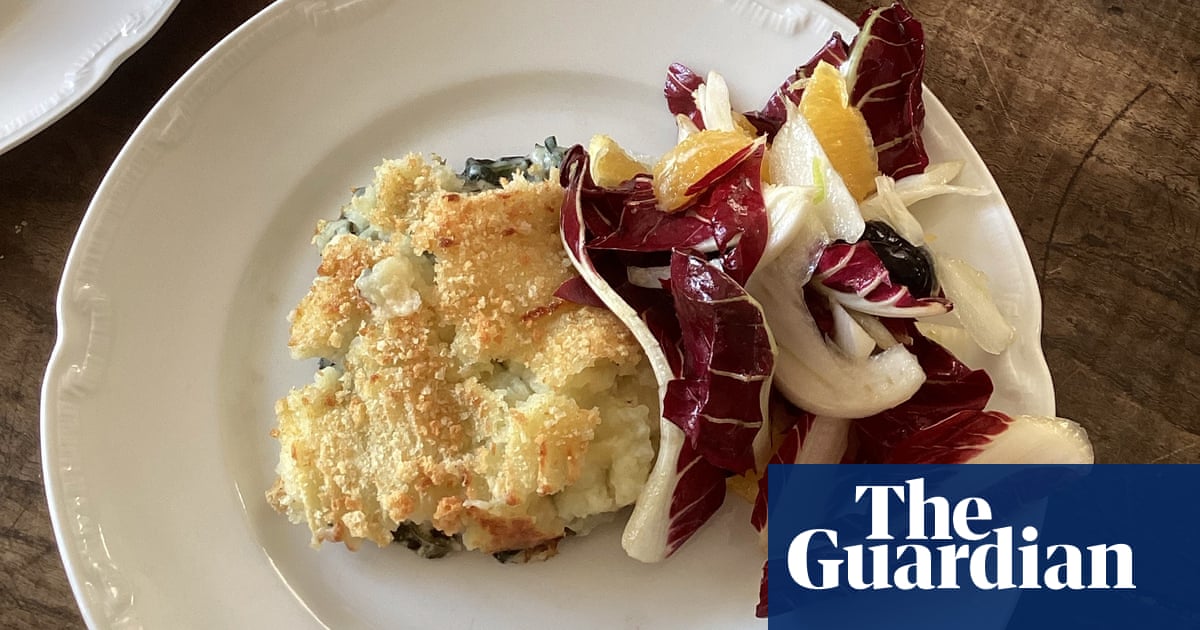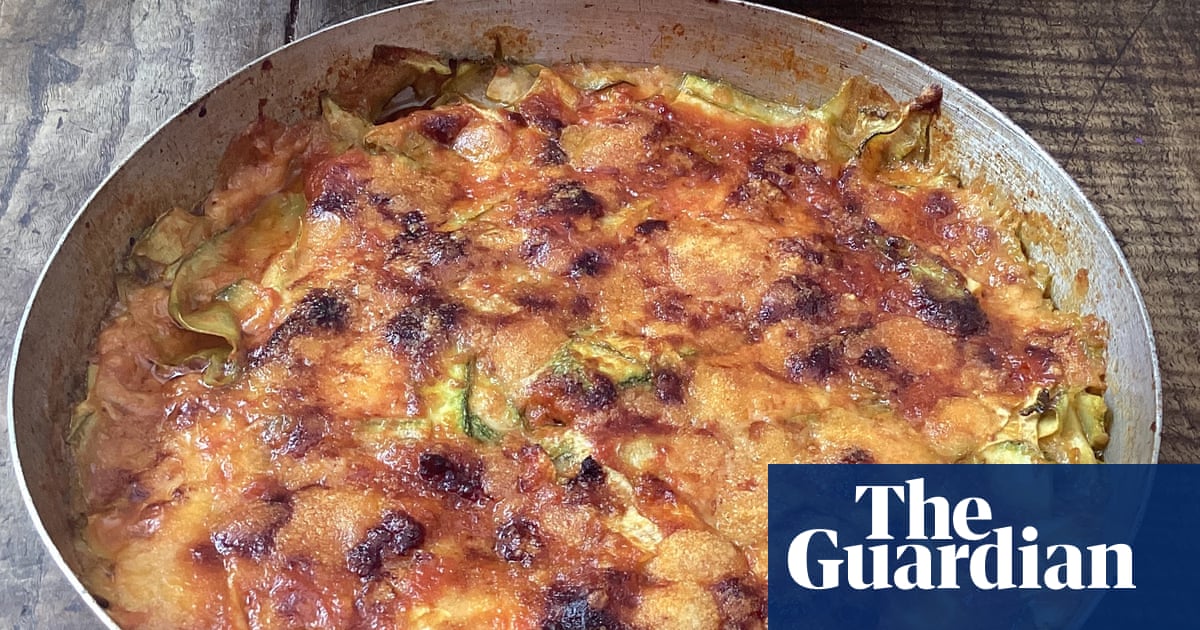
The first time I read the instruction “strip the cavolo nero”, I took it to mean that I should cut it into strips. So I gathered a few leaves into a bundle, then cut across the lot, forming thick ribbons before continuing to cook whatever it was I was making, which might have been soup. I prepared cavolo nero like this for years. Until, that is, I watched a cookery demonstration at a country festival in Umbria where the chef demonstrating held a stem of cavolo in one hand, then, with the other, clasped the leaf and pulled, separating the tough midrib from the bubbly green.
Now, for anyone familiar with cavolo nero, I am no doubt describing a logical and completely obvious preparation. For me, though, on a cold Sunday near Perugia, he was a magician and I was an idiot.
I also couldn’t wait to get home and strip. Which, thanks to the almost fabric-like nature of the leaves and hard rib, is an extremely satisfying job. Liberated from the fibrous and resistant mid-rib, the rest of the green-black leaf, with its embossed, bubble-wrap texture, is more satisfying to cook. Even without the rib, though, cavolo nero (also known as toscano, cavolo toscano, Tuscan kale, nero di Toscano, black kale, lacinato kale, kale, dinosaur kale, flat back kale) is robust. However you prepare it, you need to be bold.
If you want to eat it raw, the leaves need to be massaged aggressively with salt and oil to relax the fibres. Once massaged, cavolo nero is great with sliced orange, fennel and oven-baked olives. Added to soup, it needs a long simmer, while, if you cook it down in a pan, it needs either to be boiled briefly first, or given some time to soften, after which it becomes even more like fabric; its mustard heat lessens and its sweet, iron flavour comes through. Wilted down, cavolo nero is good on toast. Or it can be cooked again, dragged around the pan with olive oil, garlic and chilli to go with pasta (and maybe a spoonful of ricotta) or mixed with bechamel and used as the filling for a winter bake inspired by both Neapolitan potato cake and mashed potato sandwich. I like this best if I make it in the morning; then, by 7.30pm, it feels like a present.
It might sound like kale overload, but I think the cavolo nero, orange, fennel and olive salad I described above is great with this bake, as is just a green salad. The last slice, reheated in a frying pan the next day, is the best slice.
Potato, cavolo nero and bechamel bake
Prep 25 min
Cook 40 min
Serves 4, generously
2kg potatoes, suitable for mashing
Salt and black pepper
300g greens – cavolo nero, kale, spinach or chard
Olive oil
90g butter
60g plain flour
600ml whole milk
Nutmeg
3 tbsp grated parmesan (optional)
2 egg yolks
100g defrosted peas (optional)
100g fine dry breadcrumbs
Peel the potatoes – if they are even in size, they can remain whole, or you could cut them into evenly sized pieces for quicker cooking (although bear in mind that the smaller the pieces, the more water gets into them, and you don’t want too watery a mash). Cover with cold water, add salt, bring to a boil, then reduce to a simmer and cook until they are tender.
Meanwhile, if you are using cavolo nero or another kale, strip the leaves from the tougher stems and cut them into thick ribbons; if you are using spinach or chard, simply wash it. Warm a little olive oil in a hot pan, then add the greens and leave to wilt. Once they have collapsed, use a spoon to press down on the leaves, then tilt the pan and pour off any excess liquid. Use scissors to snip the greens up slightly.
To make the bechamel, melt 60g of the butter in a pan, then add the flour and stir so it forms a thick roux. Whisk in the whole milk, then cook, stirring, until it thickens to a point when it coats the back of a spoon. Season with salt, pepper and nutmeg. Mix the greens with the bechamel, and add a tablespoon of grated parmesan.
Once the potatoes are tender, drain them well and pass through a food mill or a ricer to mash them. Add the remaining 30g butter, the egg yolks and remaining parmesan, then season.
Heat the oven to 180C (160C fan)/350F/gas 4. Choose an ovenproof dish roughly 20cm x 20cm, grease with olive oil or butter, then dust heavily with breadcrumbs. Press half the mash into the base, pour in the greens and bechamel, then carefully cover with the rest of the mash. Dust the top with more breadcrumbs, then bake for 20 minutes, or until the top is golden and the edges bubbling.












